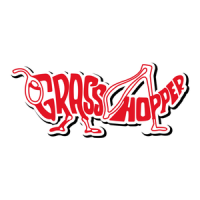15
the stability of the machine on a given slope
based on existing conditions like: machine
speed and direction, slope variation, slip-
periness, drop-offs, holes, obstacles, etc.
• To determine stability on a slope, start at
the bottom and try to drive the machine up
the slope slowly. If you cannot drive up the
slope or if you feel uneasy on it, do not oper-
ate on it.
• Always start mowing at the bottom of slopes.
Traveling up slopes, this machine has more
traction traveling in reverse than forward.
Be careful on slopes to avoid driving into a
position where there is not enough traction
to enable driving out or stopping.
• Tires may lose traction on slopes even
though the brakes are functioning properly.
• Avoid sudden stops and deceleration when
traveling forward downhill as mower may
tip forwards.
• Do not mow slopes when grass is wet because
slippery conditions will reduce traction and
braking which in turn affects steering.
• Use caution when making turns. Slow the
mower down before making sharp turns.
Unit can spin very rapidly by positioning
one lever too much ahead or behind the oth-
er.
• Look around you to be sure the area is clear
before turning or backing up.
• Avoid starting or stopping on a slope. If
tires lose traction, disengage the blades and
proceed slowly straight down the slope.
• Keep all movement on slopes slow and grad-
ual. Do not make sudden changes in speed
or direction.
• Pass diagonally through sharp dips and avoid
sharp drops.
• Follow manufacturer’s recommendation
for counterweights for added stability when
operating on slopes or using front or rear
mounted attachments. Remove weights
when not required.
• Use extra care with grass catchers or other
attachments. These can change the stability
of the machine. Do not use grass catcher on
steep slopes.
• Do not operate without ROPS deployed.
If the engine does not start within 10
seconds after the starter is engaged,
stop cranking the engine and wait for
30 seconds. Repeat starting sequence
(including the preheating sequence).
Also, if the engine will not start after
refueling or after setting for a pro-
longed period, refer to bleeding fuel
lines in the “Engine Troubleshooting”
section of this manual. Never allow
the starter motor to run continuously
for more than 30 seconds. Be sure to
warm engine up regardless of season.
Loading an insuffi ciently warmed up
engine will shorten its service life.
COLD WEATHER STARTING TIPS
Use proper viscosity oil for temperature expect-
ed (refer to “Engine Manual”).
Set throttle half open.
A warm battery has better starting capacity than
a cold one.
Use fresh winter grade fuel. It is better for winter
starting than leftover summer grade fuel.
UNEVEN TERRAIN
Be careful when operating machine on
uneven ground.
Do not operate on steep slopes. Opera-
tion on a steep slope could cause loss
of control, machine to overturn and
personal injury or death.
• Do not operate on steep slopes. This machine
was not specifi cally designed to operate on
steep slopes.
• The operator is responsible for safe operation
on slopes. Only the operator can determine
IMPORTANT
WARNING
WARNING

